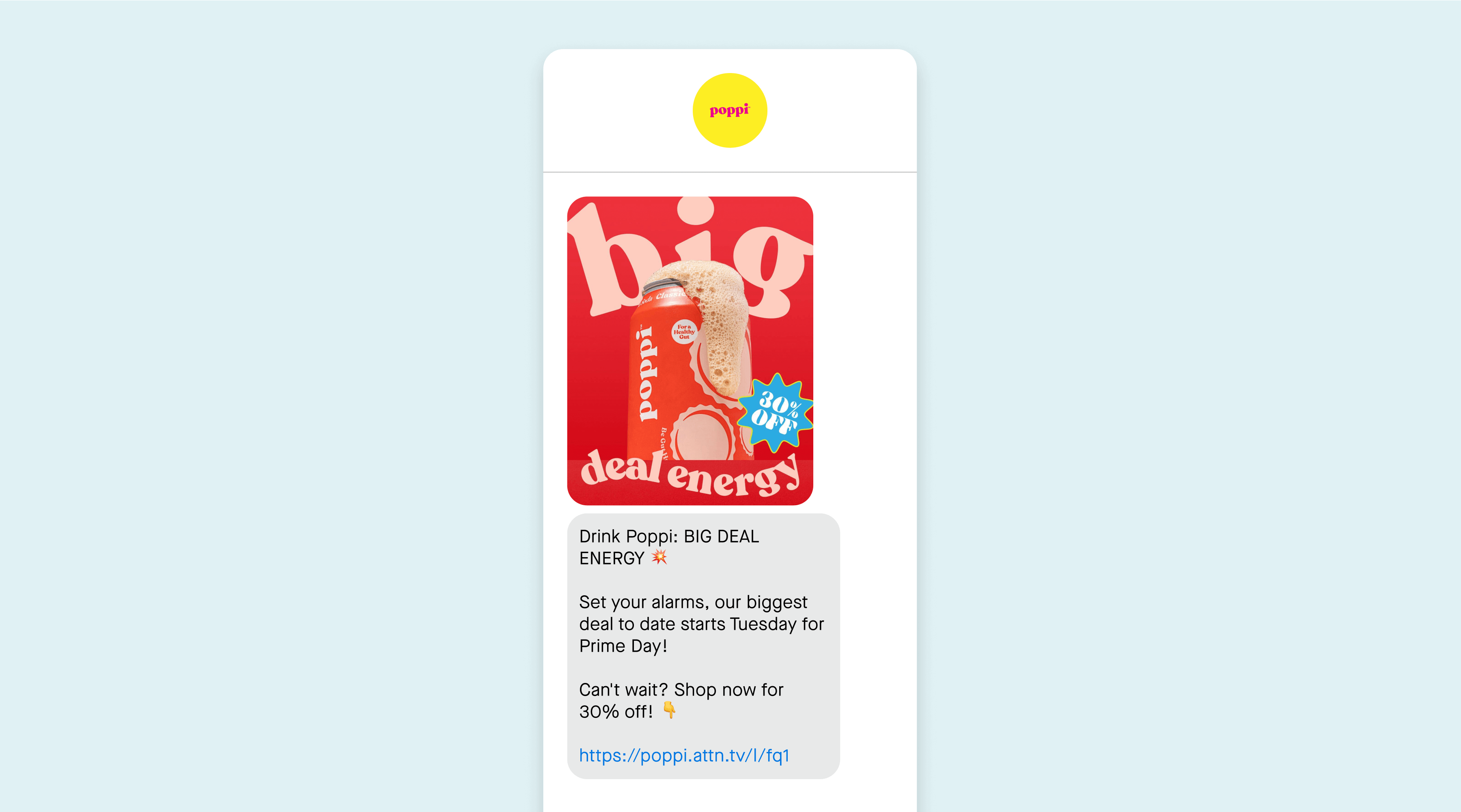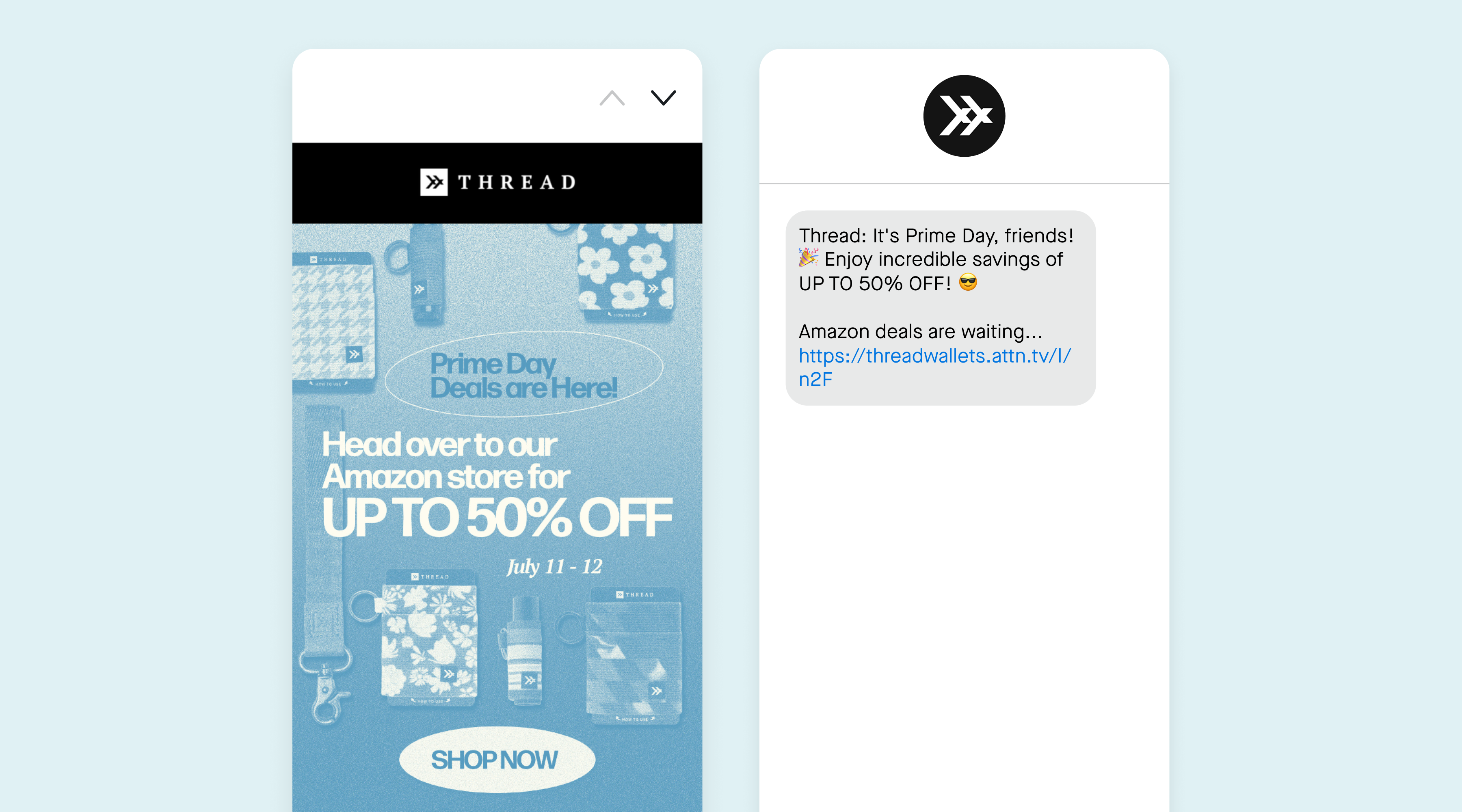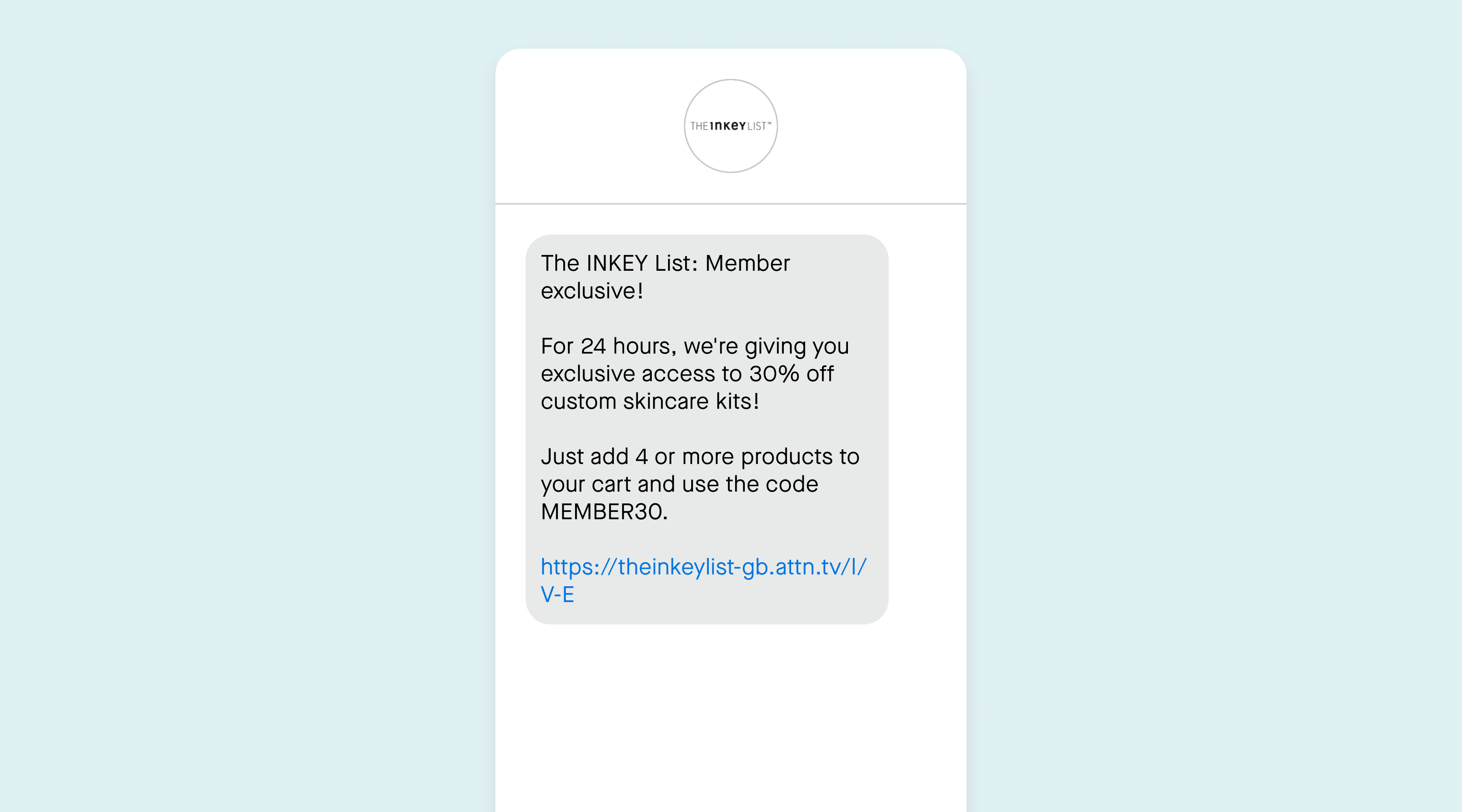
New releases
A smarter, simpler Attentive
Explore new features →
Explore new features →

Amazon just announced its fall sales event, Prime Big Deal Days, is returning October 7–8. Many consumers look forward to this shopping event to score great deals and get an early start on their holiday shopping.
The summer iteration of Prime Day 2025 brought in record sales. And total spending across the entire event reached $24.1 billion in the US.
Shoppers are eager to take advantage of deals as economic uncertainty increases and tariffs increase prices across categories. And while consumers are hunting for discounts, brands that aren't on Amazon can get in on the action too by offering up their own deals.
Taking advantage of your first-party data and using SMS and email marketing can help you reach shoppers directly with relevant offers.
Use these Prime Day marketing strategies and examples as inspiration to maximize engagement and revenue for your brand, whether selling on Amazon or on your site.

Prebiotic soda brand Poppi used the days leading up to Amazon Prime Day to build anticipation for their exclusive offer. They sent out a teaser message a few days before the event, encouraging customers to get excited for their "biggest deal to date."
To satisfy those who couldn't (or didn't want to) wait, Poppi also included an offer that shoppers could take advantage of right away, linking directly to their Amazon store page. This strategy allowed the brand to drive Prime Day sales before it even started.
If you don’t sell on Amazon but are planning to launch a competing sale, starting promotions early is a great way to get people “primed” and ready to shop.

CALPAK, a travel brand specializing in bags and accessories, immediately caught their customers’ attention with a straightforward offer of $20 off when customers spent $150.
Consumers were already looking for online shopping deals and CALPAK simply redirected their shopping to the brand’s website, where customers could find not just exclusive savings but also find exclusive items. So, prime shipping may be out, but the Prime Day savings are not. But, they had to hurry as it was a limited-time promotion.
Did you know: Shoppers are more likely to make a purchase in the morning (perhaps after browsing the evening before and sleeping on their decisions). Conversion peaks between 8am - 11am, driving a 7.5% higher CVR than the rest of the day.

Instead of driving traffic to their own website during Prime Day, lifestyle and accessories brand Thread Wallets capitalized on consumer demand and excitement by encouraging shoppers to buy from their Amazon store.
This approach may seem counterintuitive at first, especially since you’re likely more focused on increasing your own site traffic. But it’s a smart strategy for brands who have a presence on Amazon. Shoppers will already be there browsing for great deals, and they’re expecting the fast shipping experience they’ve come to love.
By combining email and SMS in their Prime Day promotion, Thread Wallets’ customers can choose which shopping experience they’d prefer, shopping from their phone or computer. Another plus is that both marketing messages reaffirm the incredible offer of up to 50% off.

Kodiak Cakes, no stranger to sending amazing Prime Day marketing campaigns, used both email and SMS to let customers know about their “epic” Prime Day offer: 20% off oatmeal variety packs. It’s a smart strategy, especially given that 85% of shoppers say that when they subscribe to a brand’s SMS program, they also sign up for their email. Knowing this, they tapped into each channel's strengths to entice their subscribers.
The protein-packed breakfast brand had fun with their messaging by playing with the word “prime” and “dishing” out the savings. The brand also made it easy for customers to start shopping right from their phones by providing individual links to either the oatmeal packet variety pack or oatmeal cup variety pack, whether clicking from the SMS message or email.
Given that consumers interact differently with email and SMS, Kodiak Cakes combined the channels to maximize the campaign’s effectiveness. SMS is short and sweet, and email is long and sweet. Email allows you to cover more ground and link to multiple areas of your website and is the perfect add-on to any urgent or important messages you’ve sent using SMS.
Kodiak Cakes used both channels well. They used vibrant imagery to showcase their tasty products in their email, and for SMS they gave customers direct links to shop their bestsellers during the limited-time sale.

Skincare brand, The INKEY List used their SMS channel to promote a limited-time, member-exclusive offer.
Knowing that their customers were already on the lookout for limited-time deals, they leaned in on urgency, and used their SMS channel to give members an exclusive offer on custom skincare—making them feel like the VIPs they are.
Did you know: Shoppers across all generations are very open to discovering and purchasing new items on mobile. A majority of consumers (50%) buy a mix of new items and repeat purchases when shopping on their phones–another reason this strategy worked so well.
Want more ideas for Prime Day and beyond? Explore our SMS gallery, Texts We Love, for inspiration from leading brands. And check out our 2025 Marketing Campaign Calendar filled with tips and templates for key marketing dates.